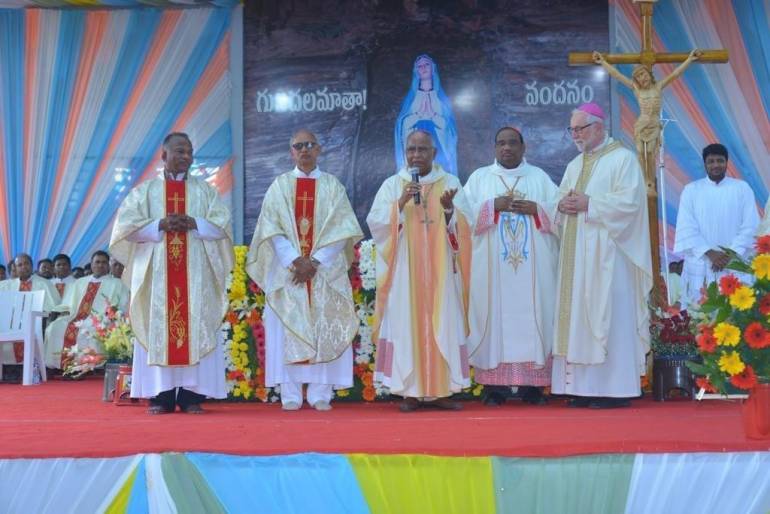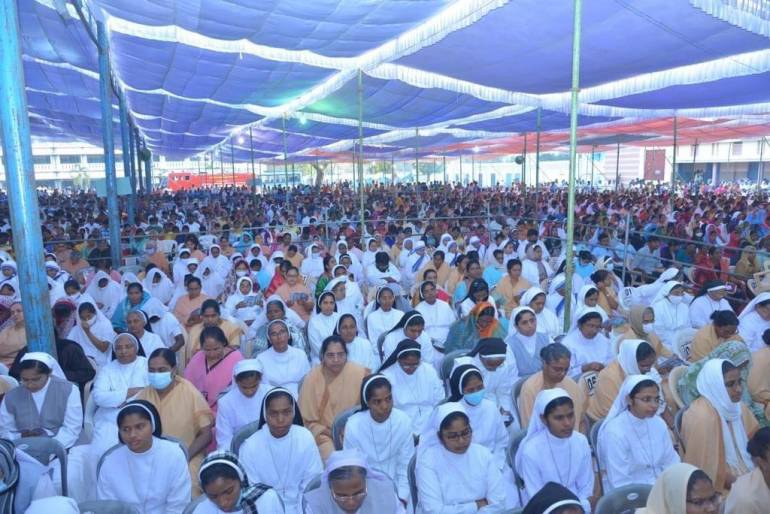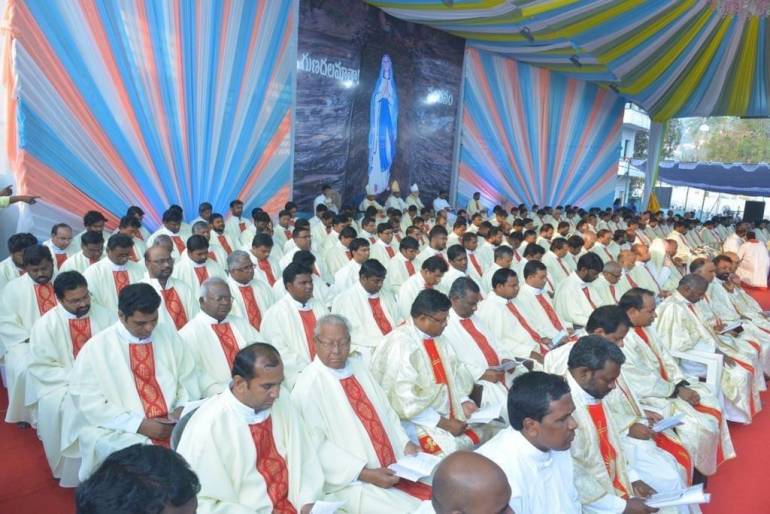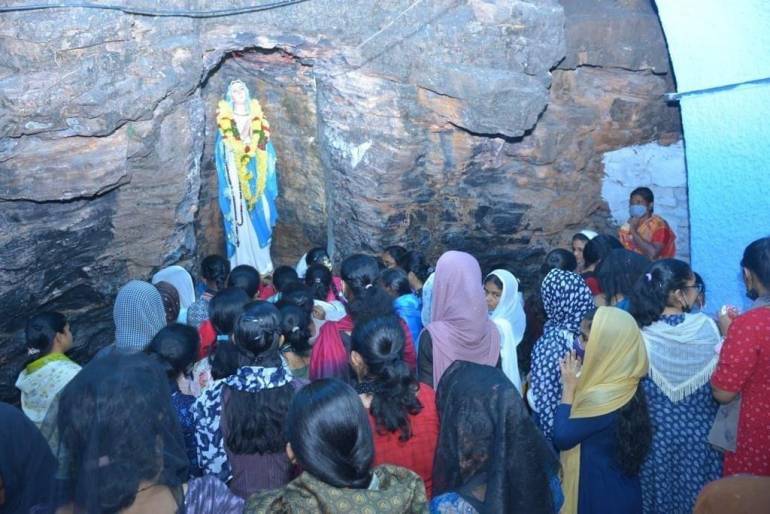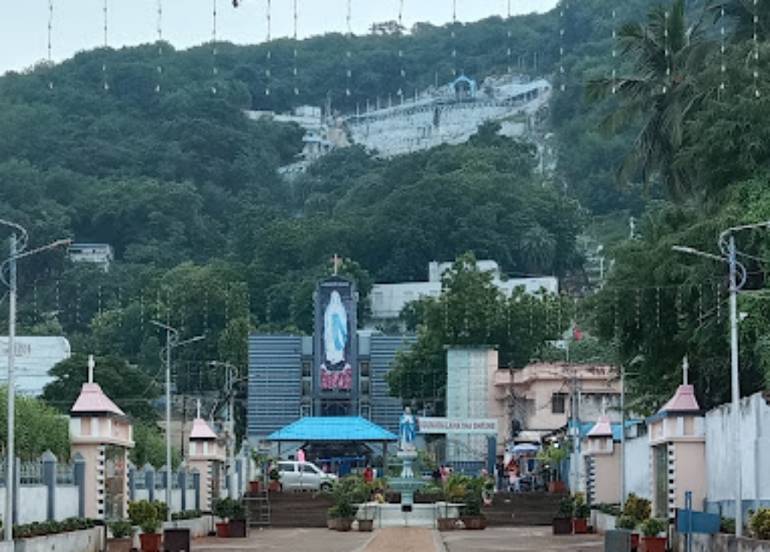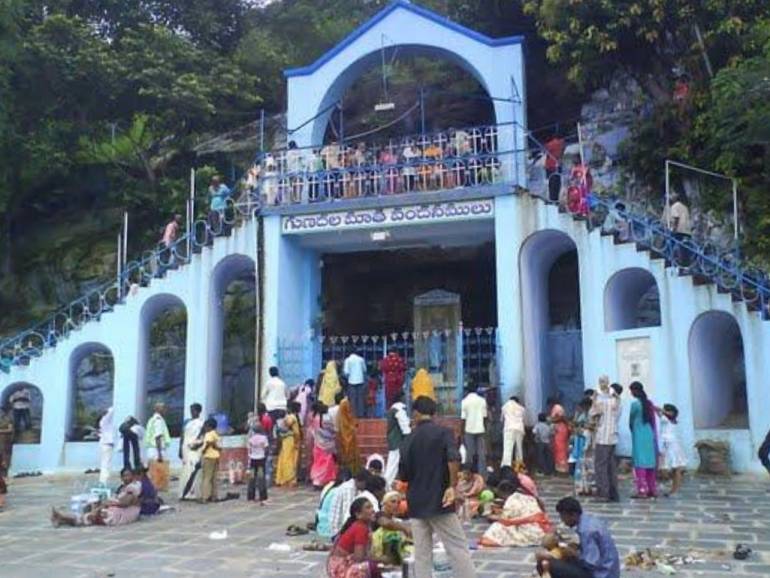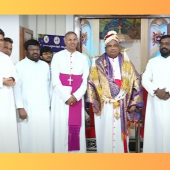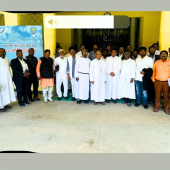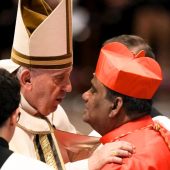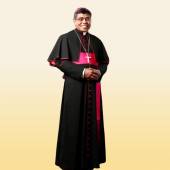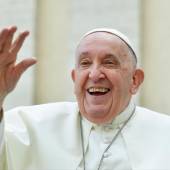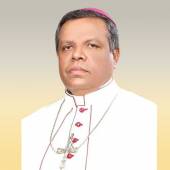99th Gunadala Mary Matha festival in Vijayawada Diocese, South India
The three-day annual Gunadala Mary Matha festival in Vijayawada Diocese, South India, concluded on February 11 with the festive Mass celebrated by Cardinal Anthony Poola, Archbishop of Hyderabad, along with Bishop Thelagthoti Joseph Raja Rao of Vijayawada, Bishop Josef Marketz of Gurk Austria and over 150 priests.
"Gundala Matha is most liked form of Our Lady by the people of two Telugu states. Every apparition of Virgin Mary has a unique message to the people. Every miracle through Mother Mary reminds us the fact that God is with us," Said Cardinal Poola
Gunadala Church is considered the second largest Marian Shrine in South India, after Velankanni church at Nagapattinam in Tamil Nadu.
"This is the biggest Marian festival in which around 10 lakh devotees belonging to all castes and creeds from Andhra Pradesh, Telangana, Tamil Nadu, Karnataka and Kerala throng to the hill shrine,” said Gunadala Shrine Rector Father Eleti William Jayaraju.
The 99th annual Gunadala Mary Matha festivities began on a grand note on Thursday when Bishop Thelagathoti Joseph Raja Rao of the Vijayawada Diocese offered the holy mass marking the inauguration of the festival.
On January 31 evening, the flag of the Marian Feast was hoisted marking the first day of Novena. Every year, the novena attracts thousands of people who join in a candle-lit prayer of the rosary, reflections, adoration of the Holy Eucharist and the Holy Mass on the hill slope.
Vicar Generals of the neighboring dioceses led the nine novena masses along with diocesan choirs.
Devotees pray to Gunadala Matha (Mary) believing that she would intercede for their good health and prosperity.
An estimated 100,000 pilgrims of all religions offer hair during the three-day festival, as the symbol of sacrifice of beauty for receiving blessings from Mother Mary.
Gunadala Mother Mary’ s intercession is sought for healing barrenness by tying UTTI (knots) to the trees close to the Grotto. Coconuts and flowers are offered to Mary Matha.
Thousands of people who visit Gunadala Matha through the year receive numerous blessings through the intercession of Mary.
This year, the festival marks the beginning of the centenary celebrations of the shrine.
GUNADALA MARY MATHA SHRINE – THE BEGINNINGS
IN 1923 Msgr Pezzoni, a PIME Italian Missionary, obtained a site of 25 acres of barren and bushy land at the foot of a hill of Gunadala from the Government, where he opened an orphanage and school for boys.
Msgr. Pezzoni moved to Gunadala on 15 June 1923, with 30 orphans of the Mission School at Bezwada (One – Town). This was the humble beginning of many institutions at Gunadala.
Father P. Arlati, the first Manager of Gunadala Institutions, cleared the jungle and set up the St. Joseph’s orphanage and industrial school by 15 June 1924.
In 1925 Father Arlati PIME, the then Rector of the Orphanage at Gunadala, cut a small pathway to the hill top and placed a small statue of Our Lady of Lourdes in the cut niche. This was the starting point of the local devotion to Our Lady on the Gunadala Mary Matha hill. The feast of Our Lady of Lourdes became an annual feast for the inmates of the institutions and the local Catholics, with a procession to the top of the hill and Mass at the grotto. Very soon a winding pathway to the grotto was slowly and painstakingly cut on the hill.
In 1933, to commemorate the decennium of the foundation of the Gunadala institutions an 18 feet high iron cross was erected on the summit of the hill. The Grotto at half way up on to the cross beautifully symbolized the truth: To JESUS THROUGH MARY.
By 1937 it had become a Diocesan festival. In that year, Fr. Arlati placed a new statue in the Grotto with an altar and the feast of Our Lady of Good Health began.
In the subsequent years, different priests widened the path, enlarged the grotto and levelled the ground in front of the grotto. Pictures of the fifteen mysteries of the Rosary were set up along the pathway leading to the Grotto.
In 1951 a new statue of Our Lady presented by Msgr. Battista, then Vicar General of the PIME, and later the Bishop of Vijayawada, was installed with a staircase leading to the stature to enable pilgrims to touch the feet of Our lady and place their offerings.
Over the years roads and rest houses for pilgrims were constructed and 14 stations called “Way of the Cross” were installed from grotto to the Cross on the hilltop. - Pujitha Nagalli
Radio Veritas Asia (RVA), a media platform of the Catholic Church, aims to share Christ. RVA started in 1969 as a continental Catholic radio station to serve Asian countries in their respective local language, thus earning the tag “the Voice of Asian Christianity.” Responding to the emerging context, RVA embraced media platforms to connect with the global Asian audience via its 21 language websites and various social media platforms.





